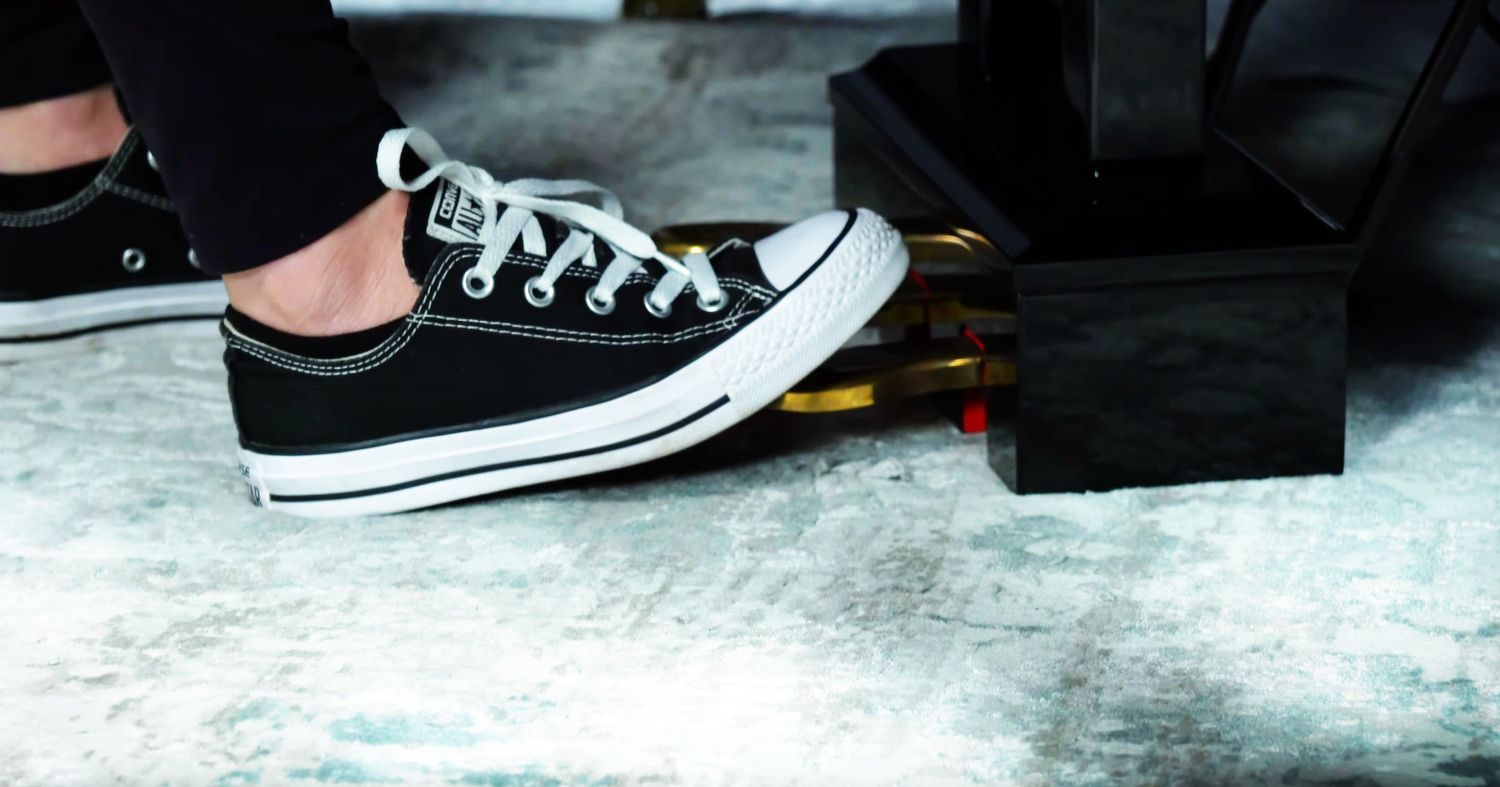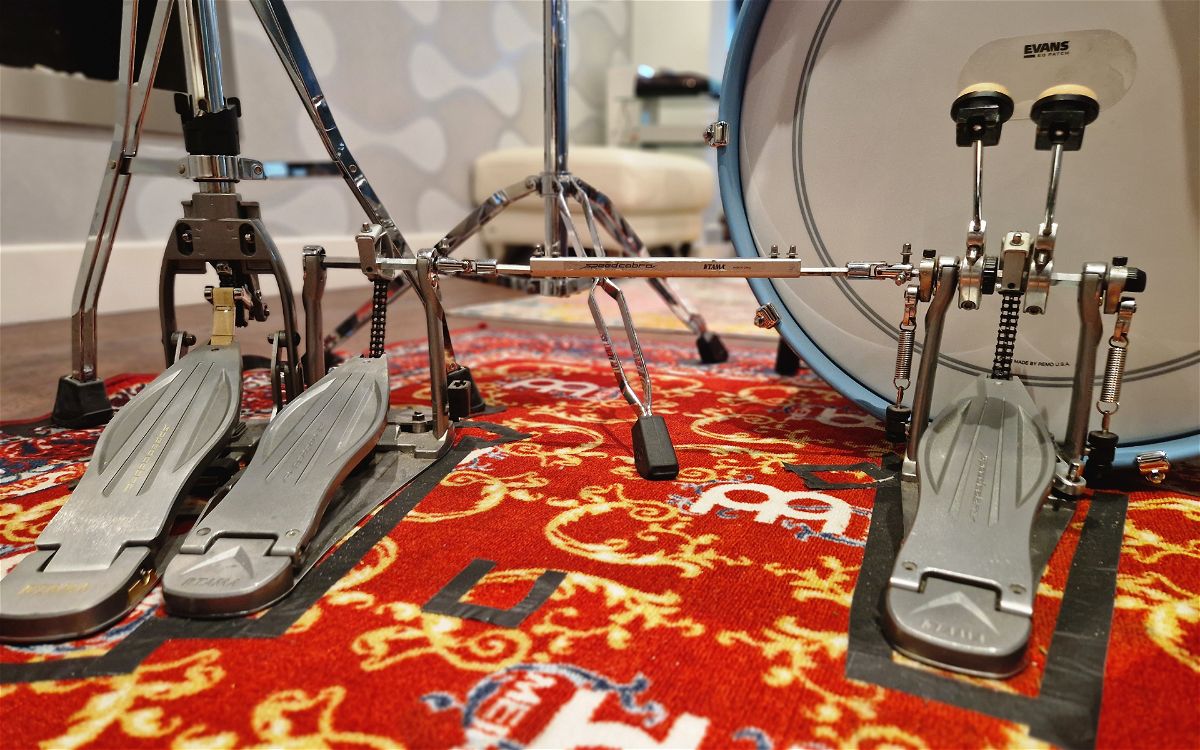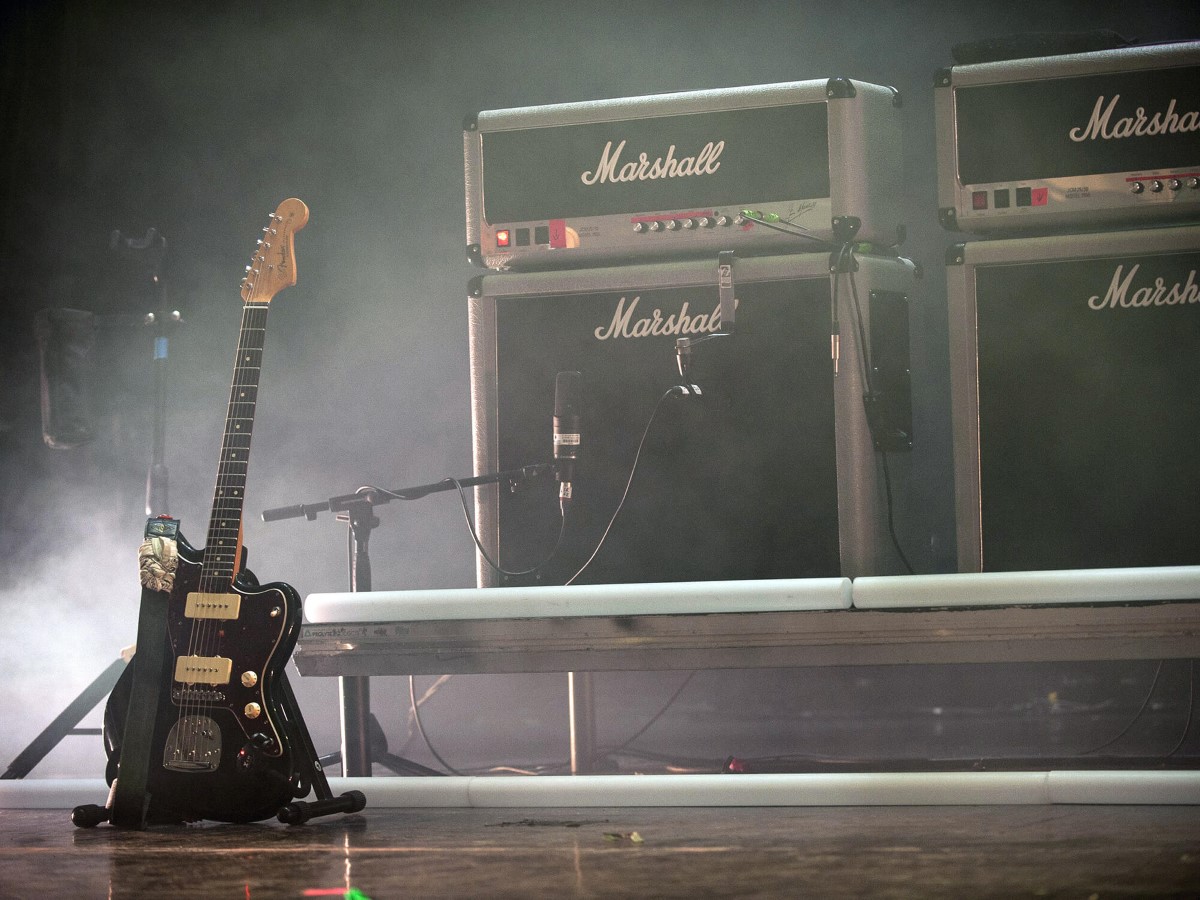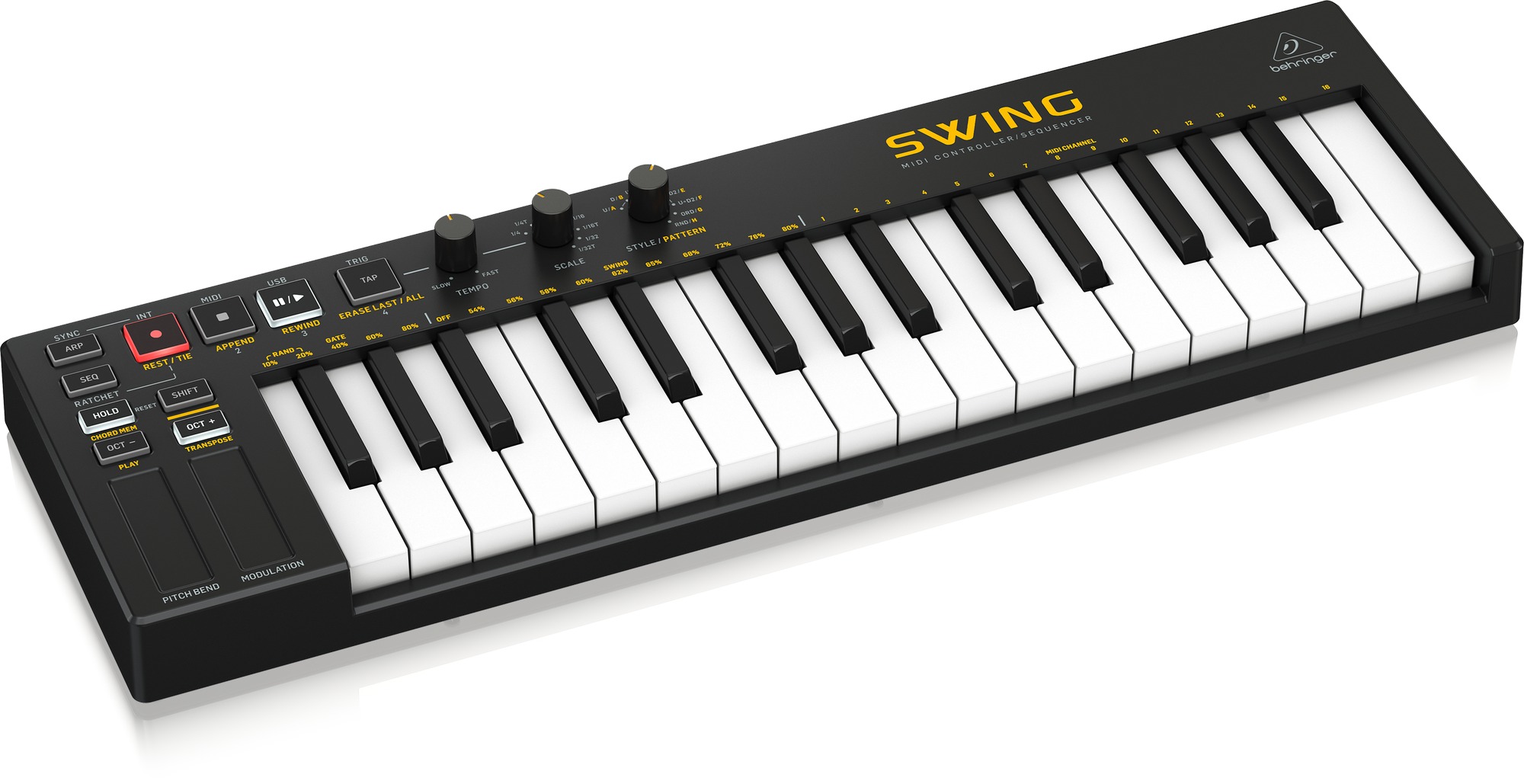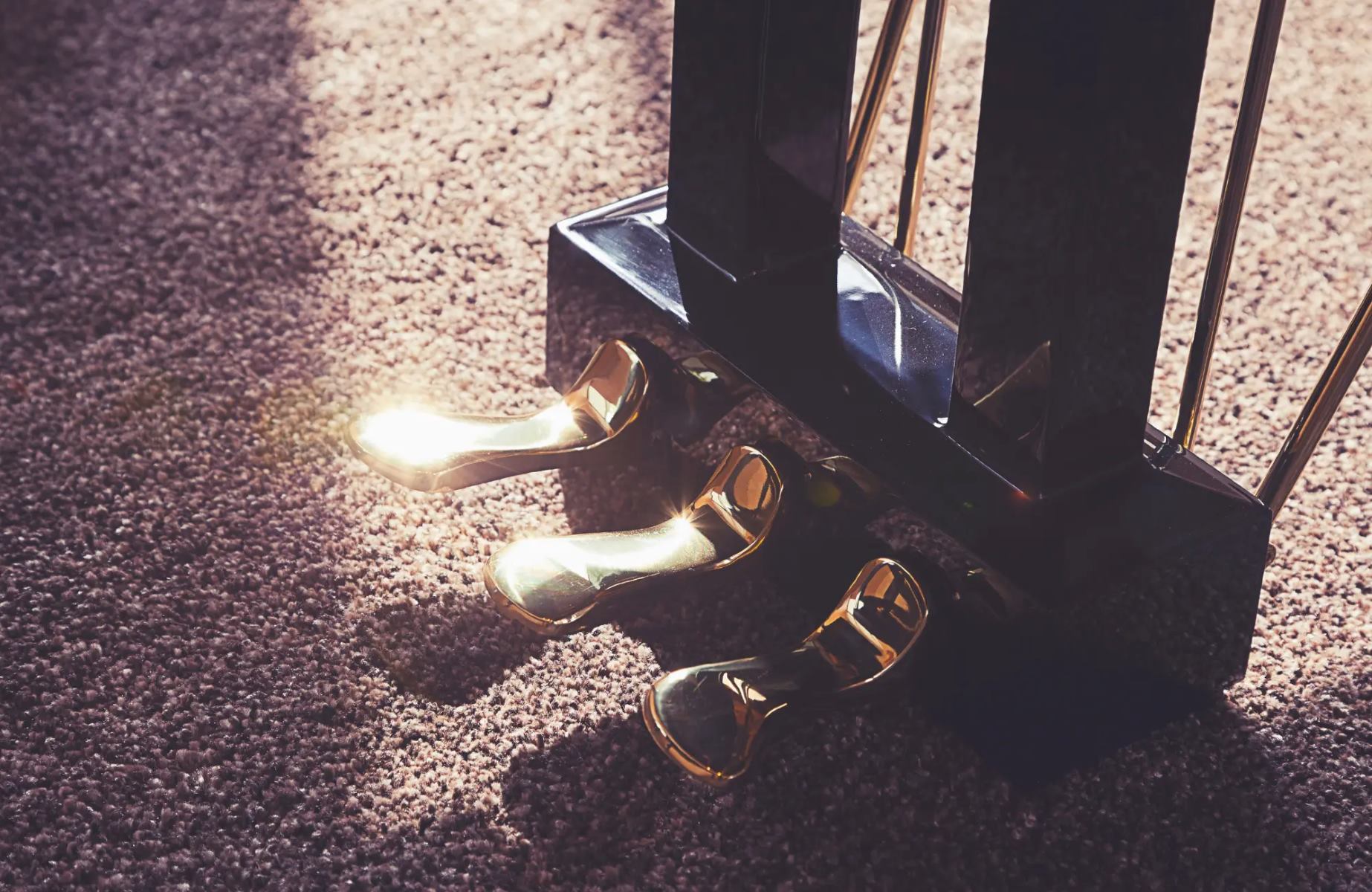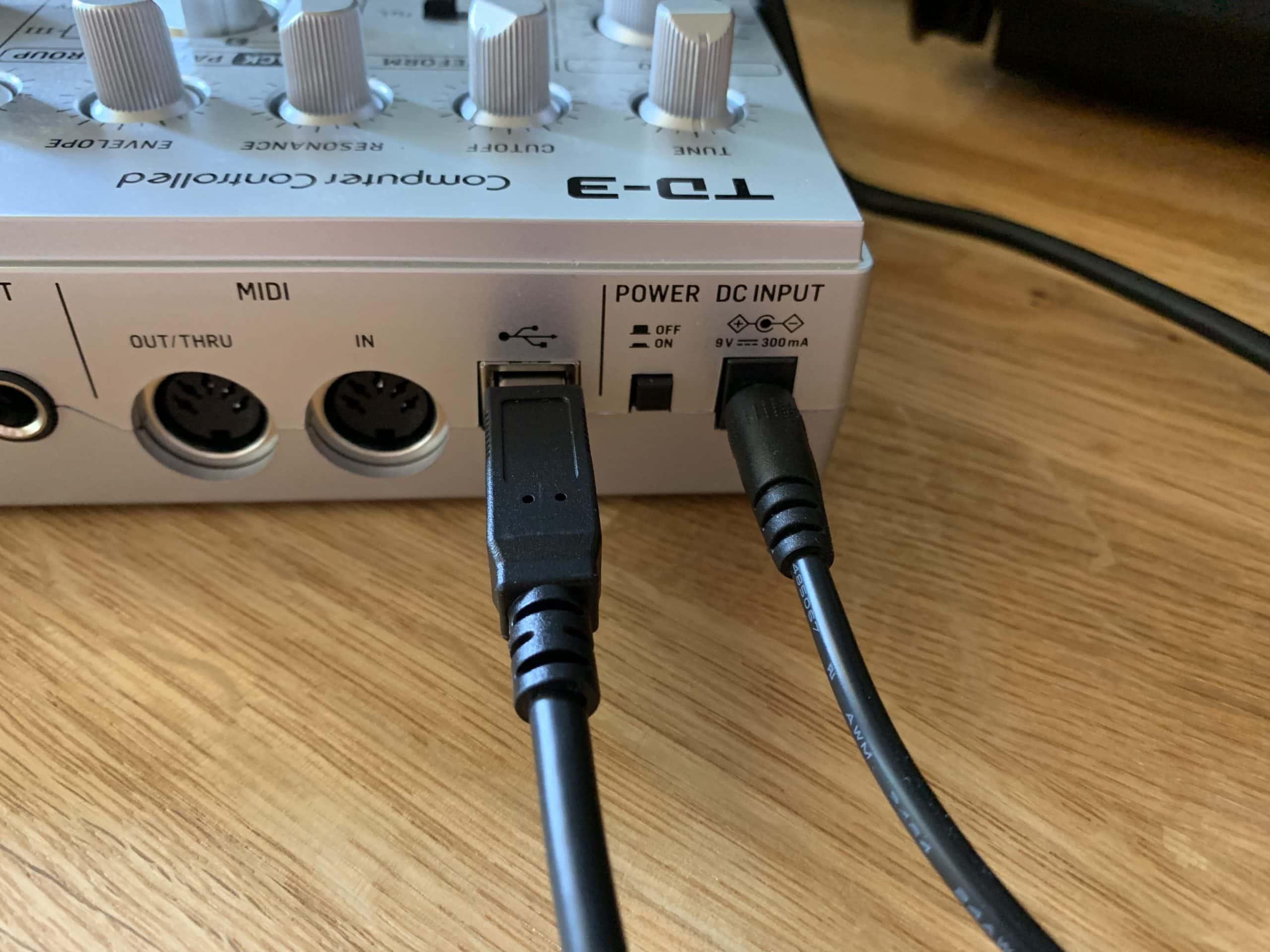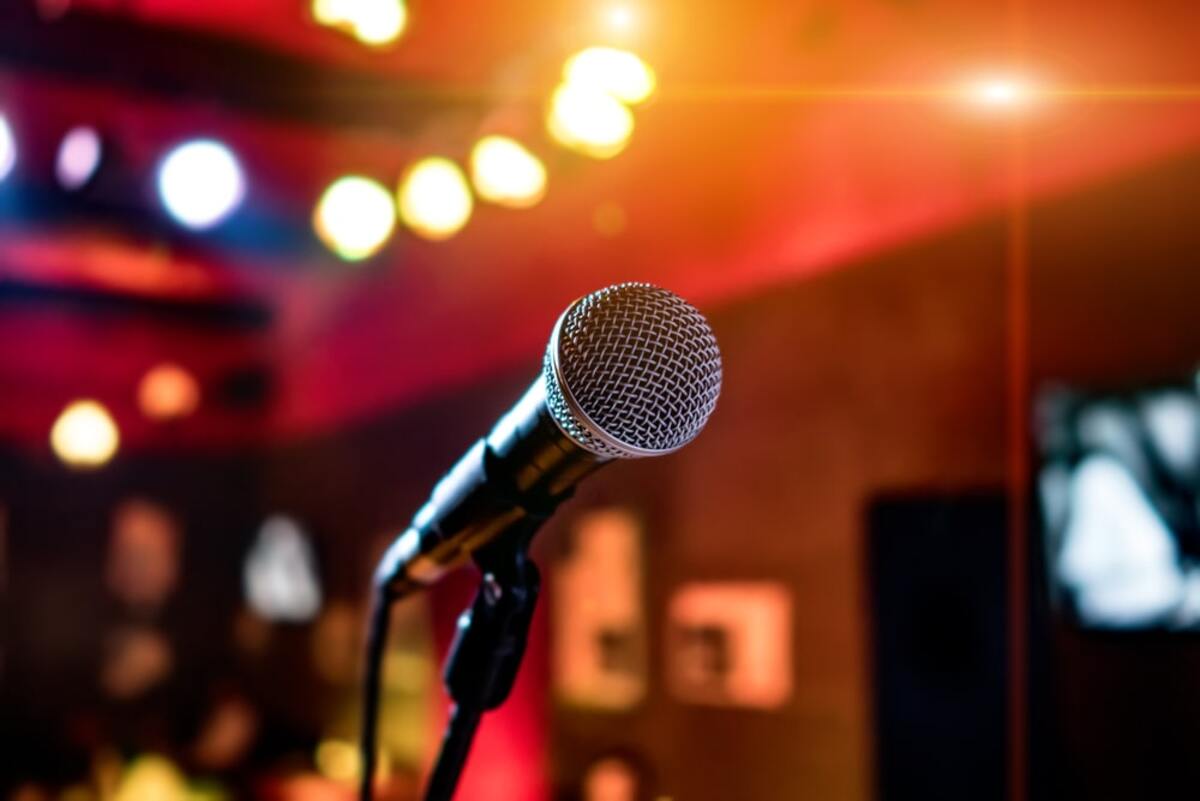Home>Instruments>Guitar>How To Connect A Guitar Pedal
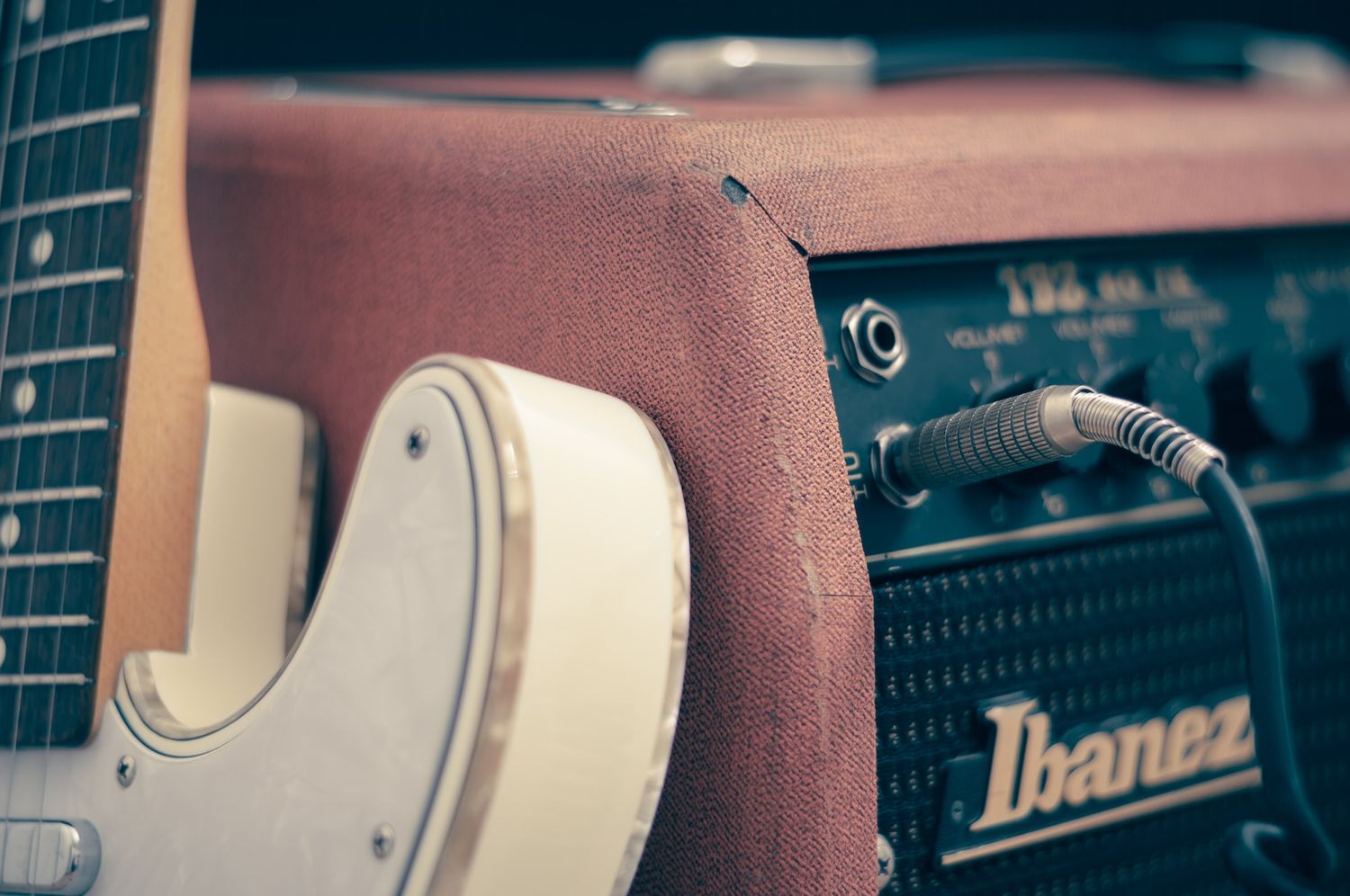

Guitar
How To Connect A Guitar Pedal
Modified: February 15, 2024
Learn how to connect a guitar pedal to your setup and enhance your sound. Find step-by-step instructions and tips for connecting guitar pedals.
(Many of the links in this article redirect to a specific reviewed product. Your purchase of these products through affiliate links helps to generate commission for AudioLover.com, at no extra cost. Learn more)
Table of Contents
Introduction
Introduction
Are you ready to take your guitar playing to the next level? Guitar pedals are an essential tool for shaping and enhancing your sound, whether you're a beginner or a seasoned musician. These small electronic devices, also known as stompboxes, can add a myriad of effects to your guitar's signal, such as distortion, reverb, delay, and modulation. By understanding how to connect a guitar pedal, you can unlock a world of sonic possibilities and personalize your playing experience.
In this comprehensive guide, we will delve into the intricacies of connecting a guitar pedal, from understanding its components to troubleshooting common issues. Whether you're a guitarist looking to expand your sonic palette or a curious enthusiast eager to explore the world of effects, this guide will equip you with the knowledge and confidence to integrate guitar pedals into your setup seamlessly.
Throughout this journey, we'll cover the fundamental aspects of guitar pedals, including their role in shaping tone, the various types of effects they offer, and the step-by-step process of setting up and connecting a pedal to your guitar and amplifier. By the end of this guide, you'll not only grasp the technical aspects of connecting a guitar pedal but also appreciate the creative potential it unleashes.
So, grab your guitar, dust off your pedalboard, and let's embark on this enriching exploration of how to connect a guitar pedal. Whether you're aiming to craft soaring solos, create ambient soundscapes, or unleash raw, gritty riffs, the world of guitar pedals awaits, ready to elevate your musical journey.
Understanding the Guitar Pedal
Understanding the Guitar Pedal
Before delving into the technicalities of connecting a guitar pedal, it’s essential to grasp the fundamental role and components of this transformative device. At its core, a guitar pedal is a compact electronic unit that alters the sound of an electric guitar signal. These pedals are typically housed in durable enclosures designed to withstand the rigors of live performances and studio sessions.
One of the key components of a guitar pedal is the footswitch, which allows the guitarist to engage or disengage the effect with a simple tap of the foot. This hands-free operation is particularly valuable during live performances, enabling seamless transitions between different sounds and textures. Additionally, most pedals feature knobs or dials that enable the user to adjust parameters such as gain, tone, and modulation speed, providing a customizable sonic experience.
Guitar pedals come in a diverse array of types, each offering unique sonic enhancements. For instance, overdrive and distortion pedals add grit and intensity to the guitar’s tone, ideal for genres such as rock and blues. On the other hand, modulation pedals, including chorus, phaser, and tremolo, introduce swirling textures and rhythmic pulsations to the sound. Furthermore, delay and reverb pedals create spatial depth and ambience, enriching the overall sonic landscape.
Understanding the role of each type of pedal empowers guitarists to curate a personalized pedalboard that aligns with their musical preferences and playing style. Whether aiming for a vintage, gritty sound reminiscent of classic rock anthems or seeking to craft ethereal, ambient textures, the diverse range of guitar pedals caters to a wide spectrum of artistic aspirations.
By comprehending the basic anatomy and sonic capabilities of guitar pedals, you’ll be well-equipped to explore the next crucial step: setting up and connecting these transformative devices to your guitar and amplifier.
Setting Up Your Guitar Pedal
Setting Up Your Guitar Pedal
As you embark on the journey of integrating a guitar pedal into your setup, it’s crucial to understand the step-by-step process of setting up and configuring this transformative device. Before connecting the pedal to your guitar and amplifier, it’s essential to ensure that your pedalboard, if you have one, is organized in a manner that facilitates easy access and seamless operation during performances and practice sessions.
The first step in setting up your guitar pedal involves arranging the pedals on a pedalboard, if applicable. This not only provides a neat and organized layout but also allows for efficient cable management, reducing the likelihood of tangled wires and signal interference. Once the pedals are positioned on the pedalboard, it’s time to connect them using instrument cables, ensuring a secure and reliable signal chain.
When arranging the pedals, consider the order in which they are connected, as this significantly impacts the resulting sound. A common signal chain configuration involves placing the pedals in the following sequence: tuner, wah, compressor, overdrive, distortion, modulation, delay, and reverb. However, the order can be tailored to suit individual preferences and the specific sonic character desired.
After arranging the pedals on the pedalboard and establishing the signal chain, it’s essential to power the pedals. Most guitar pedals can be powered using a 9-volt battery or an external power supply. Utilizing a dedicated power source not only ensures consistent performance but also minimizes the environmental impact of disposable batteries.
Furthermore, it’s beneficial to consider the placement of the pedalboard in relation to your playing position. Placing the pedalboard within comfortable reach allows for effortless engagement of the pedals during performances, enabling seamless transitions between different effects and sounds.
By meticulously setting up your guitar pedal and pedalboard, you lay the foundation for a streamlined and efficient workflow, empowering you to focus on your musical expression without being encumbered by technical distractions. With the setup process complete, the next step involves connecting the guitar pedal to your instrument and amplifier, unlocking the potential for sonic exploration and artistic innovation.
Connecting the Guitar Pedal to Your Guitar
Connecting the Guitar Pedal to Your Guitar
With your pedalboard meticulously organized and the pedals set up, it’s time to establish the vital connection between your guitar and the first pedal in the signal chain. The initial step involves using a standard instrument cable to link the output of your electric guitar to the input of the first pedal, typically located on the right side of the pedal when facing it.
When connecting the guitar to the pedal, ensure that the cable plugs securely into both the guitar’s output jack and the pedal’s input jack, minimizing the risk of signal loss or disconnection during performances. Additionally, it’s advisable to route the cable in a manner that minimizes the likelihood of tripping over or accidentally unplugging it, thus ensuring uninterrupted play.
Once the guitar is successfully connected to the first pedal, you’ve established the foundation for sculpting your desired tone and exploring a diverse range of effects. The seamless integration of the guitar and the pedal sets the stage for a dynamic and expressive playing experience, allowing you to unleash your creativity and musical vision.
It’s important to note that the specific type of pedal connected first in the signal chain can significantly influence the overall sound. For instance, placing a distortion or overdrive pedal as the initial effect can shape the fundamental character of the guitar’s tone, while positioning a modulation or time-based effect first may yield distinct sonic textures and spatial enhancements.
By understanding the impact of the pedal placement in the signal chain, you can tailor the connection sequence to align with your sonic aspirations and playing style. Whether aiming for blistering leads, atmospheric soundscapes, or rhythmically pulsating textures, the connection between your guitar and the first pedal lays the groundwork for sonic exploration and artistic expression.
With the guitar seamlessly linked to the first pedal, the next crucial step involves connecting the pedalboard to your amplifier, completing the circuit that channels your guitar’s signal through a myriad of effects, ultimately shaping your unique sonic identity.
Connecting the Guitar Pedal to Your Amplifier
Connecting the Guitar Pedal to Your Amplifier
As the signal from your guitar traverses the array of effects on your pedalboard, the next pivotal connection involves linking the final pedal in the signal chain to your amplifier. This crucial step ensures that the meticulously crafted sonic enhancements and tonal manipulations produced by the pedals are faithfully conveyed to the amplifier, culminating in a rich and expressive sound that resonates with your artistic vision.
To establish this connection, use a standard instrument cable to link the output of the last pedal in your signal chain to the input of your amplifier. This connection completes the circuit, allowing the modified guitar signal to pass through the effects and reach the amplifier, where it is amplified and projected as sound waves.
When connecting the pedalboard to the amplifier, ensure that the cables are firmly plugged into the respective jacks, minimizing the risk of signal loss or interference. Additionally, consider the positioning of the amplifier in relation to your pedalboard, aiming to create a clutter-free and easily accessible setup that facilitates seamless operation during performances and practice sessions.
Furthermore, it’s beneficial to verify that the amplifier is powered and set to an appropriate volume level before engaging the pedals. This proactive approach ensures that the amplified sound is consistent and optimized for the effects being employed, allowing for a harmonious blend of the guitar’s natural tone and the embellishments introduced by the pedals.
By establishing a robust and reliable connection between the pedalboard and the amplifier, you pave the way for a transformative sonic journey, where your musical expressions are augmented by an array of effects and tonal nuances. Whether aiming to unleash searing leads, atmospheric textures, or rhythmically pulsating rhythms, the seamless connection between the pedalboard and the amplifier empowers you to explore a diverse sonic landscape.
With the guitar pedal successfully linked to the amplifier, the next crucial step involves testing the connection to ensure optimal performance and sonic integrity, allowing you to unleash the full potential of your pedalboard and amplify your musical creativity.
Testing the Connection
Testing the Connection
With the guitar pedal connected to both your instrument and amplifier, it’s time to put the setup to the test. Testing the connection not only ensures that the signal path is intact but also allows you to evaluate the sonic impact of the effects and make any necessary adjustments before diving into performances or recording sessions.
Begin by engaging the guitar pedal and strumming the instrument to produce sound. Listen attentively to the amplified output, paying close attention to the tonal characteristics and any discernible effects introduced by the pedal. If the signal is not reaching the amplifier or if the sound is distorted or absent, troubleshoot the connections and power supply to rectify any potential issues.
As you test the connection, explore the range of effects offered by the pedal, adjusting the settings and parameters to sculpt your desired sound. Whether experimenting with overdriven tones, ethereal reverberations, or rhythmic modulations, take the opportunity to familiarize yourself with the sonic palette at your disposal, allowing for seamless integration of the effects into your playing.
Furthermore, evaluate the interaction between the guitar, the pedal, and the amplifier, noting how the nuances of your playing are translated through the effects and projected by the amplifier. This comprehensive assessment provides valuable insights into the synergy between the components of your setup, empowering you to refine your sound and harness the full potential of the pedalboard.
During the testing phase, consider experimenting with different pedal combinations and sequences to ascertain the sonic variations and textures they yield. This exploration not only fosters a deeper understanding of the effects but also sparks creativity, inspiring innovative musical expressions and sonic landscapes.
Additionally, testing the connection serves as an opportunity to gauge the overall performance and reliability of the setup, ensuring that the signal chain remains robust and free from potential issues that may arise during live performances or recording sessions.
By thoroughly testing the connection between the guitar pedal and the amplifier, you gain a comprehensive understanding of the sonic capabilities at your disposal and the seamless integration of effects into your playing. This process not only validates the integrity of the setup but also fosters a deeper connection with your musical identity, setting the stage for expressive performances and boundless sonic explorations.
Troubleshooting Common Issues
Troubleshooting Common Issues
As you embark on your journey with guitar pedals, encountering technical challenges is not uncommon. However, armed with a basic understanding of common issues and their remedies, you can navigate through potential obstacles and ensure a seamless performance with your pedalboard.
One prevalent issue is signal loss or degradation, which can manifest as a decrease in volume or a loss of clarity and definition in the sound. If you encounter this issue, inspect the instrument cables and connections, ensuring that they are securely plugged into the respective jacks. Additionally, consider the condition of the cables, as wear and tear can compromise signal integrity. By using high-quality cables and periodically inspecting them for any signs of damage, you can mitigate the risk of signal loss.
Another common concern is unwanted noise or hum emanating from the amplifier when the pedals are engaged. This issue can often be attributed to inadequate power grounding or interference from other electronic devices. To address this, ensure that the power outlets used for the amplifier and pedals are properly grounded, minimizing the risk of electrical interference. Additionally, positioning the amplifier and pedalboard away from electronic devices such as computer monitors and fluorescent lighting fixtures can reduce the likelihood of interference, fostering a clean and noise-free signal.
If you encounter issues with specific pedals producing unexpected or undesirable effects, take a methodical approach to troubleshoot the problem. Begin by isolating the problematic pedal and testing it independently to identify any irregularities. Inspect the power source and connections of the pedal, ensuring that they are functioning as intended. If the issue persists, referencing the pedal’s user manual or seeking guidance from knowledgeable sources can provide valuable insights into resolving the issue.
Furthermore, periodic maintenance of the pedals, including cleaning the input and output jacks, knobs, and switches, can prevent issues stemming from dust and debris accumulation. Regularly inspecting the pedals for any signs of wear or malfunction and promptly addressing any issues can prolong their lifespan and ensure consistent performance.
By familiarizing yourself with common issues and proactive troubleshooting strategies, you can fortify your confidence in managing technical challenges and maintaining the optimal performance of your pedalboard. Embracing a proactive and methodical approach to troubleshooting not only enhances your technical proficiency but also fosters a deeper connection with your gear, empowering you to unleash your creativity without being hindered by technical impediments.
Conclusion
Conclusion
Congratulations on embarking on this enriching journey of understanding and connecting guitar pedals. As you’ve discovered, these compact yet powerful devices have the potential to elevate your musical expression and unlock a diverse range of sonic possibilities. By comprehending the fundamental components of guitar pedals, setting up your pedalboard, and establishing seamless connections between the pedal, guitar, and amplifier, you’ve taken a significant step toward harnessing the transformative power of effects in your playing.
Throughout this guide, you’ve gained insights into the diverse types of guitar pedals, their sonic capabilities, and the step-by-step process of integrating them into your setup. From overdrive and distortion to modulation, delay, and reverb, the world of guitar pedals offers a rich tapestry of effects that cater to a wide spectrum of musical styles and artistic aspirations.
By testing the connection between the guitar pedal and the amplifier, you’ve not only validated the integrity of your setup but also familiarized yourself with the sonic nuances at your disposal. Additionally, the troubleshooting strategies discussed equip you with the confidence to address potential technical challenges, ensuring a seamless and reliable performance with your pedalboard.
As you continue to explore the realm of guitar pedals, remember that experimentation and creativity are at the heart of harnessing their full potential. Whether crafting soaring solos, sculpting atmospheric textures, or infusing rhythmic pulsations into your playing, the diverse array of effects invites you to embark on a boundless sonic odyssey.
Ultimately, the journey of connecting a guitar pedal transcends the technical aspects, offering a gateway to artistic innovation and sonic self-discovery. Embrace the process with curiosity and enthusiasm, allowing the transformative power of effects to enrich your musical narrative and amplify your creative voice.
With each connection made and every sonic exploration undertaken, you’re not only expanding your technical prowess but also forging a deeper connection with your instrument and the boundless realm of musical expression. As you harness the sonic potential of guitar pedals, may your musical journey be imbued with inspiration, innovation, and the joy of creating harmonious landscapes that resonate with your unique artistic vision.

